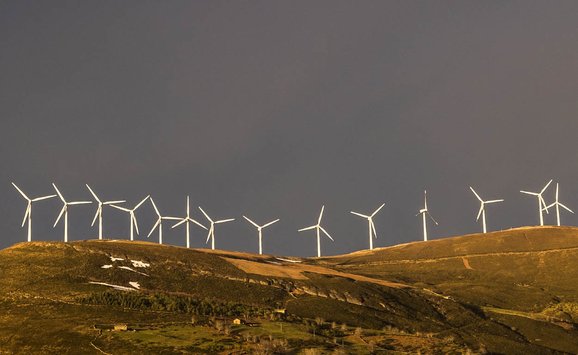WATER RESEARCH ACT. In July the President signed the Water Resource Research Act of 1964. This is potentially the most important water resources research and education legislation ever enacted. Its purpose is to stimulate research and to increase the supply of scientists in this field. To this end it provides for establishment of a Water Resources Research Institute in a land-grant college in each state.
There are already plans to establish centers in almost all of the states. The Act permits several states to get together to form regional centers, but none have done so as yet. As in the case of the Land and Water Conservation Fund, the greatest immediate effect may well be on the educational facilities for water resource scholars. There are not at present enough competent research scholars to go around, if all of the potential centers are established in the near future.

The Act provides for research in any phase of the hydrologic cycle, from engineering and biological to legal and economic. The institutes may thus become focal points of interdisciplinary research on water resource problems. Part of the money is made available outright and part is tied to matching funds supplied by states and other agencies. Appropriations will be on a rising scale. The outright funds by 1967 will amount to $100,000 annually for each land-grant college selected. The funds provided on a matching basis will increase from a maximum of $1 million this year to a maximum of $5 million in 1969 and annually thereafter. They need not be apportioned equally among the institutes. Title II of the Act provides for an annual appropriation of $1 million over the next ten years, out of which the Secretary of the Interior can make grants, contracts, matching grants, or other arrangements with any educational institution, private foundation, private firm, individual, and public agency to undertake any research related to the purpose of the Act. This last provision represents a sharp cut-back from $5 million in an earlier version of the bill.
The Act also requires that the Secretary shall submit each proposal to the President of the Senate and the Speaker of the House and that no proposal be financed until sixty days after submission and then only if no objection is raised. The Congressional veto provision raises a serious constitutional question, so much so that the President has asked the administrators of the fund not to request financing under Title II until the provision is eliminated. Introduction of legislation to this effect, and also to restore the original amount of $5 million, is expected in the 89th Congress. Important among the other provisions of the Act is the establishment of an agency, to be designated by the President, as a center for cataloging all information on water resources research conducted and planned by all federal agencies, a service that non federal agencies may voluntarily join.

INTERNATIONAL HYDROLOGICAL DECADE. A four-year effort in which U.S. hydrologists took a leading part has culminated in the development of an International Hydrological Decade (IHD), beginning with 1965, under the sponsorship of UNESCO. Formation of a Council on the IHD was authorized in 1964 by the UNESCO's General Conference. Hydrologists in at least sixty countries will coordinate their programs in the study of the complex phenomena involved in all phases of the hydrologic cycle. A US Committee on the IHD has been established in the National Academy of Sciences. Members of this advisory group include officers of federal, state, and municipal agencies, and representatives of universities and scientific organizations. The IHD will follow in general the pattern of the International Geophysical Year (IGY) which is widely recognized as having been a highly effective program of international cooperation in a field of science.
Principal reasons behind development of the IHD included (1) current gaps in knowledge of the hydrologic cycle and its influence on the occurrence, distribution, and use of water; (2) the small number of hydrologists in relation to the need, and lack of present means to educate and train enough more of them; and (3) the inadequacy of communication facilities.
The IHD will provide for world-wide coordination of national programs that will include collection of basic data, their collation and interpretation on a global basis, conduct of special studies on all phases of the hydrologic cycle, and strengthening of centers of education and training. Each nation will finance its own program.

COLUMBIA RIVER TREATY. After twenty years of engineering investigation, planning, and international negotiation, the treaty between Canada and the United States, looking toward the co-operative use of storage facilities, was ratified by the Canadian Parliament in 1964 and ratification was exchanged between the two countries. The United States had ratified the treaty in 1961.
The agreement provides for the construction of 15.5 million acre-feet of storage in Canada, which more than doubles existing storage on the Columbia. It will be used—at least initially—principally for the regulation of the Columbia River flows for maximum production at power plants in the US reach of the Columbia River. The gain in power production at US plants resulting from storage releases in Canada—equivalent to a second Grand Coulee—is to be divided between the two countries, with the United States purchasing the Canadian share for a period of thirty years for use in the Pacific Northwest, California, and elsewhere in the Pacific Southwest.
Implementation of the Columbia Treaty required also the negotiation of an extraordinarily complex coordination agreement among all of the parties participating in the United States and the decision to build extra-high-voltage transmission facilities interconnecting the Pacific Northwest with California and the Southwest.
The simultaneous consummation of these agreements initiates an undertaking of enormous scope in the integrated management of power production and exchanges on the western North American continent. This may represent the beginning of an international "power community" extending from the US Southwest to the Yukon.

DESALINIZATION. Though marked by no breakthrough, 1964 was a year of record activity in the effort to find desalination methods that will yield commercially useful supplies of freshwater.
In July, following the report of a special task force earlier in the year, the President asked the Department of the Interior, with the help of the Atomic Energy Commission, and in consultation with the Office of Science and Technology of the Executive Office of the President, to develop a program to advance progress in the large-scale desalting of sea water.
Such a program was submitted to the President in September, and by the end of the year contracts totaling nearly $700,000 had been signed. The objective of one of the contracts is to determine the feasibility, location, and design of a dual-purpose nuclear desalting plant for the Metropolitan Water District of Southern California. The desired plant is to be capable of producing 50 to 100 million gallons of water per day and 150 to 750 thousand kw of energy. The other contracts are for working out a variety of conceptual designs for large dual-purpose plants. Plans also were announced for a supplemental appropriation of $4 million to the Office of Saline Water for the current fiscal year ending June 30 and for doubling the appropriation (which now is $12 million) in the next fiscal year.
These moves toward much larger-scale plants—50 or more million gallons a day instead of the present yield of 1 to 1.5 million gallons—and toward a nuclear tie-in could raise new problems. The small user may be lost sight of, at least temporarily; this has happened generally in nuclear engineering. Also, the proposed combination of water and energy production might rekindle the public vs. private power controversy if utilities see a serious threat of a backdoor entry of public funds and control into the field of electric energy. Third, the focus on nuclear power for desalting has aroused suppliers of other forms of energy to insist that consideration be given to all energy sources.
The year's events thus emphasize the fact that technical problems are not the only obstacles to commercially feasible desalinization. But the long time perspective implied by government statements on the subject should allow ample time for considering all alternatives.





